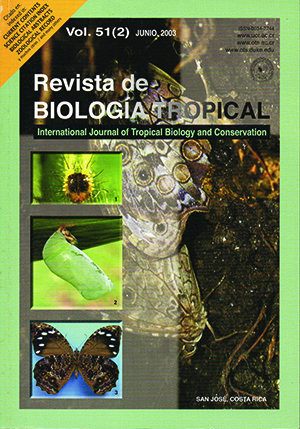Abstract
The research describe the big amount of ticks of the Amblyomma genus, found on bovines through monthly samplings carried out in ten farms in eight ecological zones (EZ) of Costa Rica. Ticks larger than 4 mm were picked up from the right side of the animals during the visit. The study compiled meteorological information for some farms located in the experiment, showing that the most fluctuant variable is rainfall. The most important Amblyomma species found was A. cajennense. Amblyomma nymphs were found only from January to May, which coincides with the lower humidity season in the rain seasonality area; as for it is expected only one generation per year. In the lab work Amblyomma nymphs are kept to measure the moulting season and the surviving time under controlled conditions, but no major differences were found between both sexes. The surviving periods show that it is not possible to do a grazing land handling, in order to control this genus species. Adults of the genus Amblyomma are present through all the year, not showing any specific preference for a season. The research divided the investigation areas in rain seasonality and not-seasonality systems. The highest amount of Amblyomma is found given in the rain seasonality system or of Pacific influence. A. maculatum is present only in the EZ of Tropical Humid Forest transition to pre-montainous. Likewise, Ixodes boliviensis is found in the EZ of low mountainous Very Humid Forest.##plugins.facebook.comentarios##

This work is licensed under a Creative Commons Attribution 4.0 International License.
Copyright (c) 2003 Revista de Biología Tropical
Downloads
Download data is not yet available.


